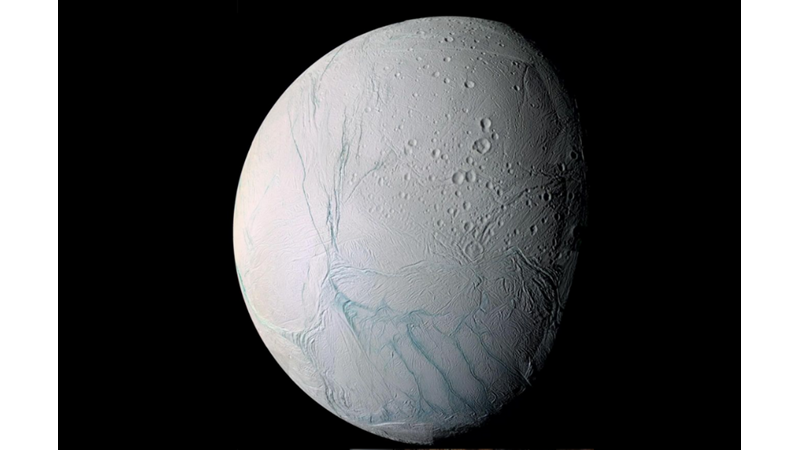The cracked and etched surface of Enceladus, one of Saturn's icy moons, is the most reflective surface in our solar system, contributing to cold surface temperatures hovering around -330°F (-201°C).
Beneath the icy crust of Enceladus lies a vast underground ocean that spews particles into space through cracks in the frozen surface. The icy water particles form Saturn's E ring, which extends from about 75,000 miles (120,000 kilometres) to about 260,000 miles (420,000 kilometres) above Saturn's equator.
Our Cassini spacecraft captured this mosaic of Enceladus from a distance of about 38,090 to 6,897 miles (61,300 to 11,100 km) while studying the icy moon. Scientists analysing the data collected by Cassini think Enceladus could be a possible habitat for life beyond our home because of its ocean and chemical composition.
Image description:
The semi-bright white surface of Enceladus contrasts sharply with the darkness of space. Cracks and bumps are interspersed throughout the surface in shades of blue and white.


 Nielawore
Nielawore









Yorum yazmak için lütfen giriş yapınız